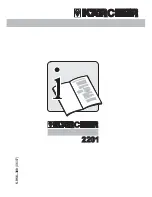
OPERATION
WET VACUUMING OPERATIONAL STEPS
AUTOMATIC SUCTION SHUT-OFF AND EMPTYING LIQUID FROM TANK
This section relates to wet vacuuming operations. This vacuum is fitted with an automatic suction
shut-off float cup (A) Fig.13 which floats up when the liquid level increases in the tank, it then stops
the suction action when the tank has reached its maximum capacity of liquid. Make sure the float
cup is clean at all times.
You will notice an increased motor speed, when this happens;
1) Turn off the vacuum immediately and unplug the power cord from the power source.
2) Remove the cover/motor assembly and lay it aside, being careful not to damage the filters, empty
the tank contents into a suitable waste disposal container by removing the drain cap (A) Fig.14
found on the lower front of the tank.
3) The inside of the tank should be cleaned, also check the foam filter and clean it from the inside
out if necessary.
4) To continue vacuuming wet materials, reposition and secure the cover/motor assembly, plug the
power cord to a power source and proceed.
USING THE DETACHABLE BLOWER
This 8 gallon (US) Wet•Dry Vacuum converts into a detachable leaf blower, to use the detachable
blower;
1) Make sure the vacuum is in the Off (0) position and unplug the power cord from the power
source.
2) Remove the noise diffuser (A) Fig.15 from the blower outlet.
3) Grasp the top handle and press the blower release button (B) and lift the detachable blower unit
from the vacuum motor/blower housing. See Fig.15.
4) Insert the blower adaptor fitting (A) Fig.16 into the blower outlet and then fit the desired 2-1/2”
blower accessory such as the extension, blower nozzle or the cone nozzle to the blower
adaptor fitting.
5) Plug the power cord to the power source, firmly hold the blower unit and turn it on by placing the
switch in the On (I) position.
WARNING!
Always wear safety glasses while operating the detachable blower unit.
Ear protection is recommended to reduce the risk of hearing damage, especially during
extended operation. Wearing a dust mask is also recommended in case the blowing
operation creates dust that might be inhaled. Only direct the blower air discharge towards
your work area,
never towards a person or animal
. Never use as a sprayer.
FIGURE 13
FIGURE 14
FIGURE 15
FIGURE 16

























